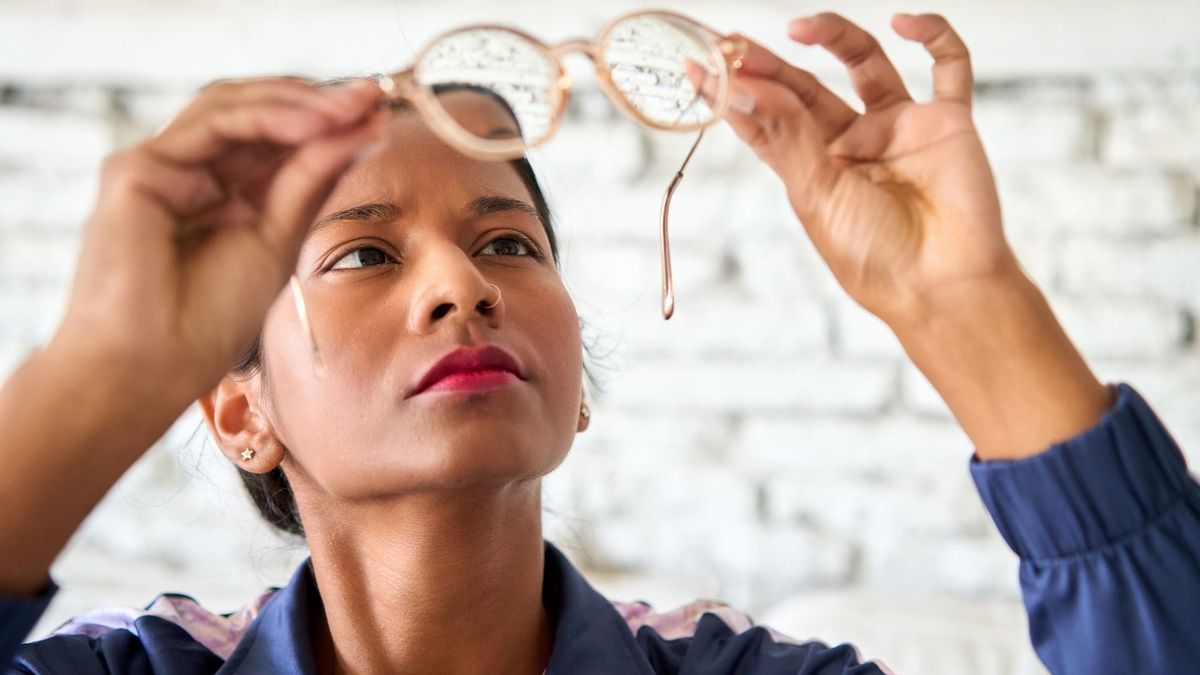
What is a progressive lens? In what cases should we wear them? How to choose them and at what price? Orthoptist Véronique Fitoussi gives us her insight.
What is a progressive lens?
And progressive lensalso called multifocalis a corrective lens placed on the glasses, which allows the wearer “to see far away, up close and intermediately by improving your eyesight”, reveals orthoptist Véronique Fitoussi. This type of lens thus offers better visual comfort.
Progressive lens, how does it work?
Wearing glasses with progressive lenses allows you to see clearly at all distancesthanks to correction areas different. Thus, the zone superior is dedicated to distance vision and zone lower dedicated to near vision. As for the power of the lens, it gradually increases (hence its name) between distance vision and near vision. “The port of progressive lenses request for‘elsewhere sometimes to new carriers a time of‘adaptation“warns the orthoptist.
Progressive lens glasses: for whom?
“The progressive lens is useful for presbyopes”, explains Véronique Fitoussi. Related to age, presbyopia generally appears around the age of 45. “Presbyopia is marked by a difference between distance and near vision“, she explains. A presbyope especially has difficulty reading closely, when it is written in small letters, “hence the need for this glass which will allow us to have a clearer vision“, underlines the orthoptist. Besides presbyopia, these lenses can be useful for other types of corrections such as myopia, hyperopia or astigmatism.
Progressive lens, how to choose it?
“Progressive lenses are chosen in store with the help of the optician“, indicates Véronique Fitoussi. The selection is made with the professional according to the needs and lifestyle of the wearer: certain progressive lenses offer very great distance visionthey can be useful for drivers for example who need great distance vision.
Other glasses offer a intermediate field of vision, from near and far their vision is more or less balanced. Finally, some people use it more limitedly, such as when looking at screens or reading. Indeed, if we experience difficulty reading and in particular “focusing” on a textour vision becomes blurry up close, or our eyes tire quickly, wearing a progressive lens can be useful at certain times of the day.
Progressive lens, what price?
As the Ministry of Health points out on its website, “it has been mandatory since January 1, 2020 for opticians to produce a standardized quote proposing a 100% Health offer“. The total amount must vary between €95 to €265 for 100% Health single vision equipment and from €180 to €370 for 100% Health progressive lens equipment. So, for “100% Health equipment including frames and lenses, in the case of a patient with low correction, the maximum price for glasses is set at €95, including €30 for frames for single-vision lenses or €180 for equipment with progressive lenses and the reimbursement of the insured is 100% covered by Health Insurance and complementary insurance.. Do not hesitate to make yourself establish a quote pour assess the care by Health Insurance and your mutual insurance company.
In addition, the maximum price for 100% health equipment is €265 in the case of very high correction with single-vision lenses and €370 with progressive lenses. Furthermore, the cost may vary depending on the technology used for glass manufacturing. In fact, a “new generation” glass will be more expensive than an older model. But, the price will also vary depending on the brand of the frame. If you choose brands of luxury manufacturersit will obviously only be the same price if you opt for typical first-price brands sign models available at your optician.
From the range of the pair of glasses also, for example, if it is a pair of eyeglasses or if you want to add progressive lenses to your pair of sunglasses. Finally, the price also depends on the model that will best suit your tastes and the shape of your face.
What alternatives to progressive lenses?
Contact lenses
In addition to the optical option of progressive lenses, some prefer to wear contact lenses. An alternative not yet fully developed, according to the orthoptist because, “the vision remains a little blurry in the distance as well as up close”.
Refractive surgery
Another possible alternative that your ophthalmologist can advise you: refractive surgery. This laser operation aims to allow presbyopic patients to no longer need to wear glasses by improving the quality of their vision, both far and near. There are two types of refractive surgery:
- Le Presby-Lasik
This operation aims to reshape the cornea and make it multifocal by giving near, far and intermediate vision. This procedure, carried out under local anesthesia, is quick (20 minutes for both eyes) and painless.
- The progressive multifocal implant
The pose d’implants multifocaux is particularly aimed at people over 60 years of age suffering from total presbyopia. What is it about ? A progressive multifocal implant is placed in place of the lens to allow the patient to have a correct vision at all distances (far, near and intermediate).
The choice of surgical technique – Presby-Lasik or progressive multifocal implant – will be made with the surgeon according to your needs. And, in particular, if your presbyopia is associated with another visual disorder such as hyperopia or myopia.
Mid-distance lenses
Instead of wearing progressive lenses, young presbyopes can opt for mid distance lenses – also called glasses decreasing or glasses Proximity, also available in optical stores. These mid-distance lenses are particularly useful for working in front of a screen or for certain activities such as reading. The principle: they offer extended quality of near vision thanks to a vast width of field.
